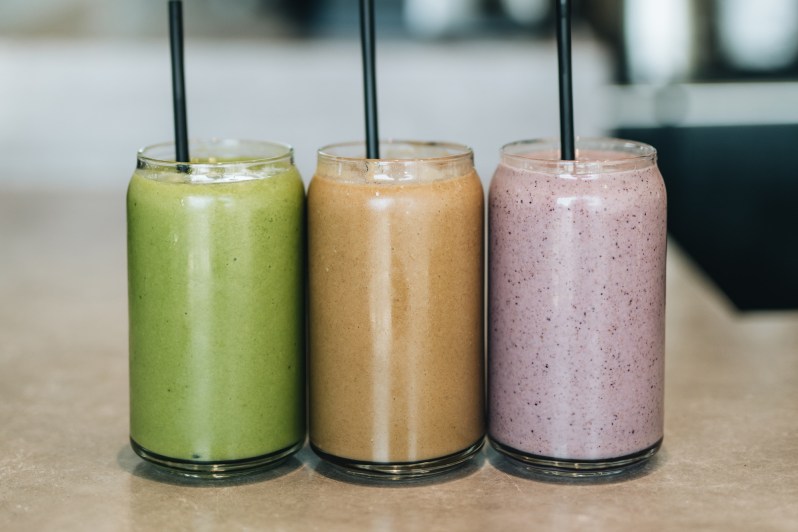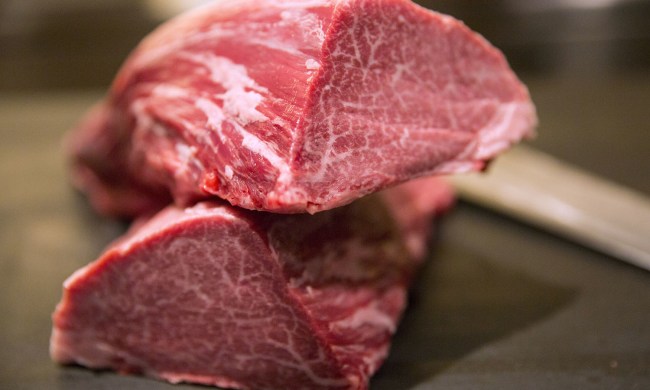Real wellness often revolves around moderation or occasional pauses, not simply the latest trending products. (That hard kombucha still has booze in it, just so we’re clear.)
Life in what’s easy to call a golden era for drinks culture makes it harder to watch your intake. And, amid a fluid climate revolving around a pandemic and countless unknowns, restraint is all the harder. This we know. But that doesn’t mean you have to be all excess, all the time. In fact, your body begs for more discipline. Fortunately, there are some inventive and highly approachable ways to keep your whistle-wetting in check, even if you’re stuck at home for a while.
Set a Deadline
One of the simplest and most effective ways to curtail boozing is with a deadline. That might mean nothing after 8 p.m. on weeknights. Or, perhaps you have kids and you like to toast the small window of free time you get once they’ve gone to bed. Create a small block of evening time in which it’s acceptable to have a drink or two and don’t deviate it from it. And this doesn’t mean upping the rate of consumption within the allowed time frame. In fact, do something engaging while you sip — like reading, watching Jeopardy!, or doing that touch-up paint project you’ve been sitting on for ages — to slow down and better manage the entire process.
Embrace the Mocktail
In case you haven’t heard, there are some amazing non-alcoholic drinks out there. While hopefully someday soon we’ll all be out enjoying them at bars and restaurants, for now, you’ll have to whip them up at home. They’re great because they tend to offer the complexity of an actual mixed drink without the booze. You’ll find great new uses for juices, shrubs, elixirs, and more.

Save Your Workout for Evening
Most athletic activity and hooch don’t mix that well. Saving your exercise for the evening is an easy way to have a dry or almost-dry day, as you’ll need some time after dinner to digest and by the time you’re done running or swimming laps, a shower and bed will be higher priorities. Engaging in an evening workout may require some extra gear like a good headlamp or reflective vest but your liver will thank you for your efforts.
There’s a Session Everything
From hazy IPAs to spirits, there are session-style versions of just about everything. These lower-alcohol drinks allow you to function more mindfully and often taste as good or better than their boozier cousins. There are even wines you can count on to be generally lower-octane, like Moscato, certain Alsatian wines, Grüner-Veltliner, and Muscadet.
Get Really Into Smoothies or Juicing
Once you find a rhythm, making your own juices or smoothies can be utterly joyous. You’ll find that kale goes surprisingly well with most fruit and citrus doesn’t just mean orange juice. While there are some decent frozen fruit options, be on the lookout for fresh berries and other produce as we enter the season. The lockdown may be coming, but you’ll still be able to go to the store. Even better news is that you can make a perfectly respectable smoothie from the frozen section, just cut it with some good yogurt.

Alternate
On days you are imbibing, switch off between alcohol and non-alcohol. Inject a glass of sparkling water in between glasses of wine, or some tea or decaf coffee in between a pair of beers. Or, go on-a-day-off-a-day, alternating as the week unwinds. It’s an easy first step in a healthier, more balanced lifestyle.
Dry Dinner
This one is admittedly harder, especially for the wine enthusiast who likes a good pairing. But going dry during dinner will open some doors. You may pay more attention to your cooking and tweaks in recipes without a nice buzz telling you that it’s perfect the way it is. For beer drinkers, you’ll fill up less and be able to enjoy more of what’s on the plate than in the glass. And for curious drinkers, it’s a great opportunity to forego the obvious glass of Cab or pint of ale for a short pour of a post-meal digestif like vermouth or vin santo (we said dry dinner, not dry dessert).
Cut Something Out Entirely
If your tastes are eclectic when it comes to booze, try eliminating a category for an extended stretch. That could mean anything from red wine to amber ale. It could be as bold as beer altogether. Keeping a single style or family of styles at bay will help keep you focused and, if it’s a drink you’re into, will keep you from taking it for granted. You can reacquaint yourself with the drink of choice after a month or two away from it, at which point you may see it more as a bonus than an entitlement.

Go Competitive
Make it a sport. Find some friends and challenge each other to do some of the above. Incentivize it with prizes. See who among you can go the longest without a cocktail. And while you’re in competitive group mode, train for a marathon, improve your agility through an online yoga series, or take bouldering lessons together (yes, you can do some or most of these while self-distancing, with the aid of a Facetime group call, the web, and maybe some at-home gear). Peer pressure’s a nuisance at the bar but away from alcohol, it’s just healthy competitive energy and strength in numbers.
Support Your Local Producers
If you can, place orders from your local purveyors. In many cities, local breweries and wineries are offering delivery to those actively and wisely staying in while COVID-19 rages on. Often times, there’s a chance to tip the whole staff, which you should totally do because in case you haven’t heard, the entire service industry is staring at an actual abyss right now (one example here). You can order in moderation while still supporting your area craftspeople, a win-win for you and the industry.
Don’t let us stop you from just going dry entirely. We just know from experience that moderation is easier, and, in some instances, nearly as fun as your normal ways. Now, more than ever, it seems people are in need of a solid, though not necessarily stiff, drink.


